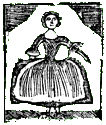Too Much Paine?
Ken Burchell recently posted the text of a review of Thomas Paine: A Collection of Unknown Writings, compiled by Hazel Burgess, that he wrote for the Journal of Radical History. It starts with some standard bibliographical head-shaking:
the collection actually contains some newly published Paine material of genuine scholarly and historical interest. There are, however, two problems. First, a great part of the collection is either already in print, easily obtained. And more problematically, the very small quantity of new Paine material is sandwiched in between a much greater quantity of work that is not of Paine’s authorship.But soon the review gets into juicier topics. Rumors that Paine had secret illegitimate children! That his skull had been discovered in Australia! That he secretly owned slaves! Alas for the cause of gossip, Burchell will have none of those notions.
The review doesn’t clarify other claims in the book’s marketing copy:
Two recently discovered portraits of Paine, one of a proudly-confident, middle aged man of Philadelphia and the other an elegantly-dressed, older, gentleman of Paris, add mystery to this book, a mystery yet to be solved.Rolling beneath the review is the rumble of scholarly rifts and feuds. Has Burgess hidden her dissertation from public scrutiny? What’s the connection between the Thomas Paine Society in the U.K. that publishes the Journal of Radicalism and the Thomas Paine Society in the U.S. that Burchell has also written for? How was the Thomas Paine National Historical Association “disgraced and fallen upon hard times”?
I don’t claim the knowledge to sort out the quality of Burgess’s work, Burchell’s criticisms, or modern Paine organizations. Ken Burchell and I first corresponded as he prepared his six-volume collection of American writings in response to Paine, and I called on his expertise to sort out a mystery last year. His blog is an easy source of Paine material, from short quotations to this essay for Free Inquiry. But since I haven’t seen Burgess’s book or other publications to judge for myself, I take no position on the areas of dispute.
Instead, my main conclusion is that Thomas Paine, perhaps more than any other figure of the American Revolutionary era, inspires passion in the people who study him.




